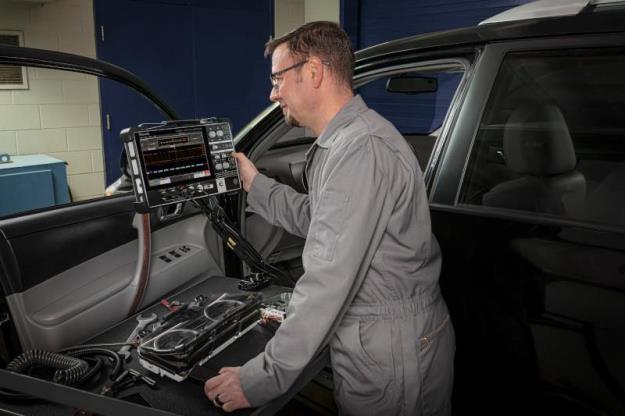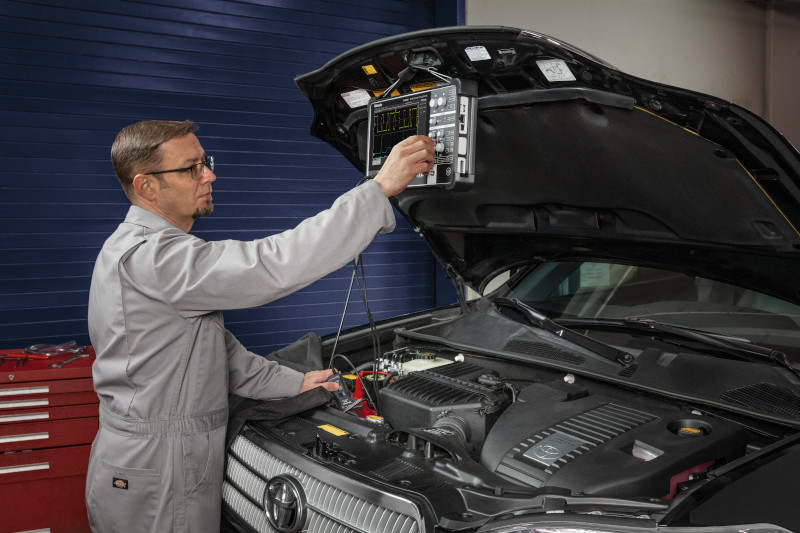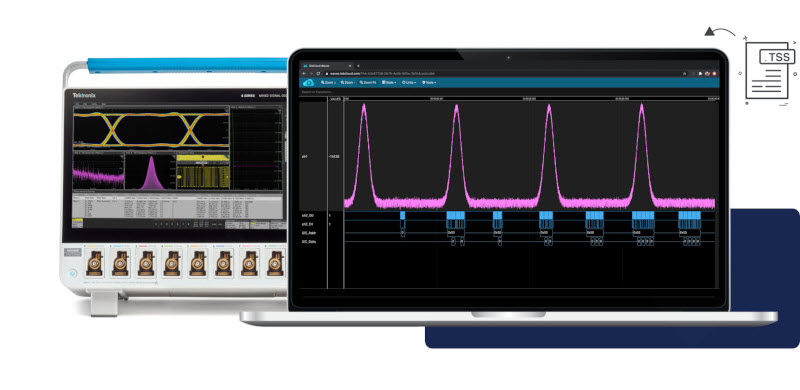

Editors note: This 3-part series of posts discusses the role of oscilloscopes in the automotive industry. Here’s the lineup:
Part 1: Bringing Portability and Power to the Automotive Industry with the 2 Series MSO
Part 2: Automotive Customers Find Improved Access and Collaboration in 2 Series MSO Remote Capabilities
Part 3: Debugging Automotive Serial Buses with the 2 Series Mixed Signal Oscilloscope
Cars have taken us where we needed to go for over a century. In that time, the industry has moved from one that focused on hardware and mechanical features, like horsepower and torque, to one that prizes features and functions primarily enabled by software, such as driver-assistance features and infotainment options. We find ourselves in the middle of a fast-moving transition to a future where software-defined vehicles (SDVs) are the norm, not the exception.
Oscilloscope Software for a Digital Future
Customer demand for automated, eco-friendly vehicles has driven automotive manufacturers to refocus their attention on electrification and connectivity and the software required to meet their new goals. Modern high-end vehicles like Tesla’s can already have up to 150 million lines of software code distributed among as many as 100 electronic control units (ECUs) and a growing array of sensors, cameras, radar and light detection devices. As driver-assistance features develop into more automated driving and toward fully autonomous driving, the need for more software—and the devices needed to test it—will only grow.

Tektronix has been watching these trends closely and recently announced the arrival of a new mixed signal oscilloscope: the 2 Series Mixed Signal Oscilloscope (MSO), which aims to provide customers across industries with bench-level performance in an accessible device that makes field debug precise and repeatable. The 2 Series MSO works where our customers work, whether that’s sitting on the bench in the lab, hanging from the car hood in a garage, or zooming around the track in a test vehicle. As we witnessed in Part One of this series, some companies have already seen the benefits the new 2 Series MSO can bring to the testing process—especially when working in the field.

In addition to the portability benefits outlined in the earlier blog, automotive customers have also found value in the included collaboration and remote analysis technology, TekDrive and TekScope, which come natively integrated into the 2 Series MSO. TekDrive is a test and measurement data workspace that allows users to upload, store, organize, search, download and share any file type with connected devices, and TekScope gives users access to the analysis capability of an oscilloscope on their PC, allowing them to analyze waveforms from anywhere. So, what does this look like for customers in the real world?
Remote Access and Team Collaboration
Let’s say a group of research and development engineers from around the world are working on automation technologies for a new vehicle. Technicians working in the field can not only collect the data they need more easily due to the portability of the automotive oscilloscope but also save and share that data in real time and collaborate seamlessly with other remote contributors via TekDrive.

Similarly, TekScope allows team members to run remote testing and analysis without an oscilloscope but using the same user interface as the connected device. Before the 2 Series MSO came on the market, automotive customers using traditional oscilloscopes had to do a tedious set of steps that included positioning the oscilloscope close enough to the car to get a connection, sending code from a remote workstation to the car and, finally, analyzing what happened. With the TekDrive and TekScope subscription option, customers can quickly set up the scope inside the car, send code from a workstation or mobile phone, and easily analyze what happens using cloud apps. They are also able to synchronize waveforms from multiple scopes on the same screen and add advanced capabilities such as spectrum analysis, jitter analysis and advanced bus decoding.
Now that we have discussed how the portability and remote control features of the 2 Series MSO benefit our automotive customers directly, the final blog in this series will get more granular and focus on debugging CAN and LIN automotive buses using the 2 Series MSO.
Visit our website for more details on the 2 Series MSO and role TekScope and TekDrive play in enhancing collaboration within automotive teams.


